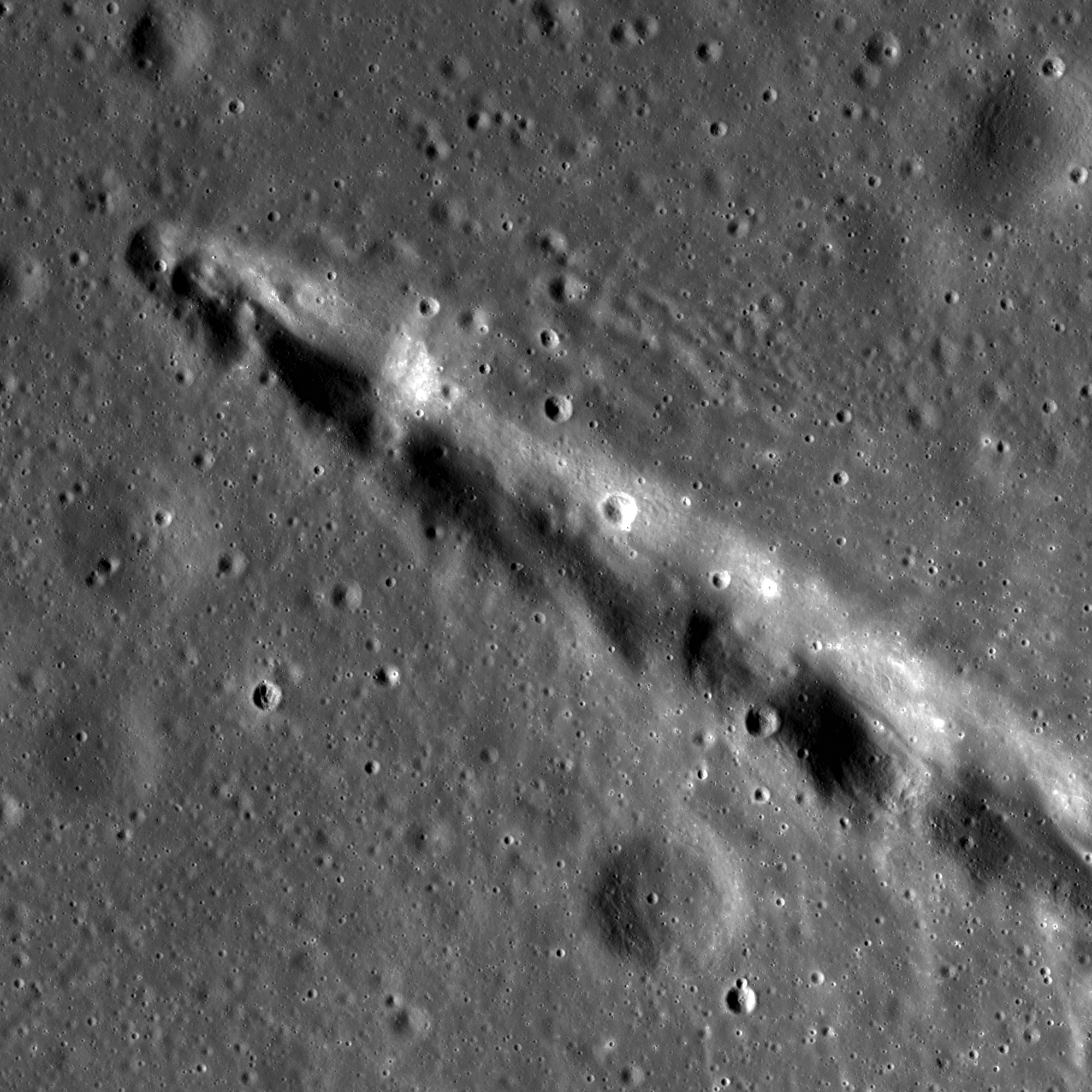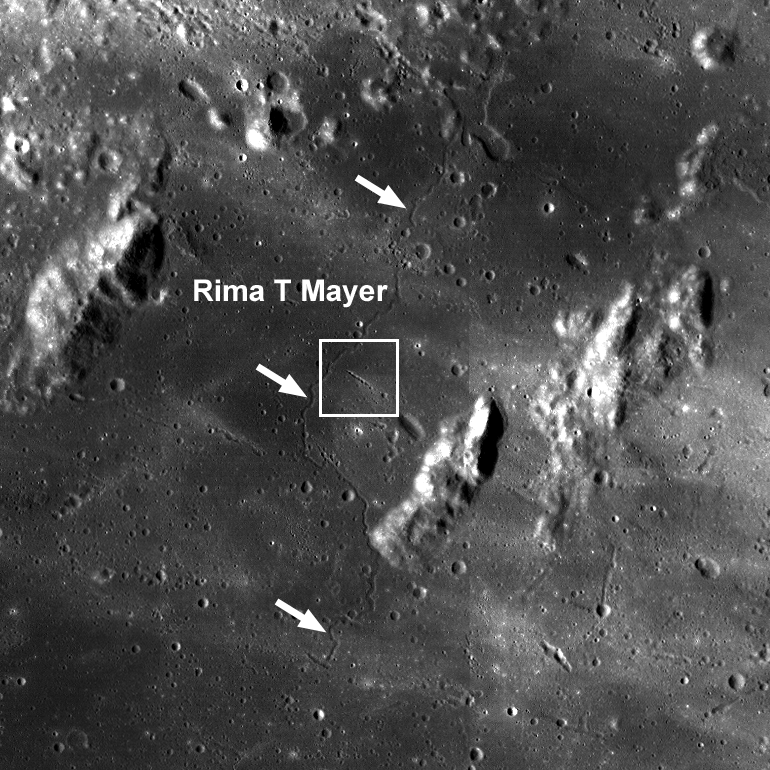
What sound do impacts make when they hit the lunar surface? If you were an astronaut standing on the lunar surface, you probably would not hear anything even if you were nearby since the lunar surface is a near-vacuum! However, you might feel the rumble of the impact through your boots perhaps giving you enough time to duck behind a nearby boulder. Today's Featured Image shows part of a ~3 km long crater chain, located at 13.360°N, 328.807°E.
The irregular shape of the crater rims and tapered appearance suggests that these are not primary but rather secondary craters, formed from material ejected from a larger primary impact. Secondary craters form many of the crater chains on the Moon, but not all. The term crater chain, or catena, describes any set of craters in a linear array. Crater chains can be formed not only by secondary craters but also by volcanic collapse (associated with graben) or primary impacts from a string of smaller objects which was observed during the Shoemaker-Levy 9 impact with Jupiter.
Can you find other areas with evidence of secondary crater ejecta in the full LROC NAC?
Related Images:
Chain of Secondary Craters in Mare Orientale
Published by Sarah Braden on 16 April 2013
